Introduction:
As an artist, you have a lot on your plate when it comes to managing your business. From handling emails to planning your next moves, the workload can be overwhelming. That's where artificial intelligence (AI) steps in, offering a helping hand to streamline these tasks and save valuable time. AI can be a powerful tool for helping you to accomplish business-based tasks in less time, but it must be used ethically, and skillfully. Beyond simply knowing how to use AI, you need to approach it with skill and finesse. It's like adding a new tool to your creative toolbox that requires thoughtful guidance to enhance rather than overshadow your unique vision.
In this blog, we will explore the pros and cons of using AI in your art business. Also read- 2024 Artistic Vision Board: Planning and Setting Goals Pros:1. AI can save you time with written tasks.As an artist, your focus is primarily on creating your artwork. However, written tasks such as emails, grant proposals, and artist statements are also essential aspects of your professional life. AI can be a valuable ally in managing these tasks efficiently. Whether you're drafting an email to a gallery curator or crafting a compelling grant proposal, AI can help you develop and flesh out ideas by providing suggestions and insights. It can also assist you in identifying areas where you may be missing critical information and help you edit your written content for grammar and clarity. By automating these written tasks, AI allows you to spend more time on your artistic endeavors while ensuring that your written communications are polished and professional. 2. AI can serve as a sounding board for fleshing out ideas:AI can serve as a sounding board for fleshing out ideas, developing plans, offering alternative views/options, or pointing out flaws. Every artist encounters moments of creative block or uncertainty during the artistic journey. In such times, AI can serve as a valuable sounding board, providing you with a platform to articulate your thoughts, explore different perspectives, and develop plans for your projects. Whether you're brainstorming concepts for a new series of artworks, or seeking feedback on your latest blog, AI can offer insights, suggestions, and critiques to help you refine your vision and approach. By engaging with AI as a collaborative partner, you can expand your creative horizons, challenge your assumptions, and push the boundaries of your artistic practice. Also read- Self-Confidence and Boundaries in Your Art Business 3. AI is affordable:Managing your budget is crucial, and investing in tools and resources that offer value without breaking the bank is essential. Fortunately, AI technologies can be surprisingly accessible and affordable, while offering a wide range of tools and platforms tailored to meet the needs of artists. By leveraging affordable AI solutions, you can harness the power of technology to enhance your art business without compromising on quality or financial sustainability. 4. AI can help proofread and offer an "opinion":Clear communication is vital for artists, whether you're writing exhibition descriptions, artist statements, or social media posts. AI-powered proofreading tools can assist you in ensuring that your written content is free from spelling and grammar errors and in maintaining a professional and polished image. Additionally, AI can offer an "opinion" on your written work by providing suggestions for improving clarity, coherence, and impact. While AI-generated opinions may not replace human judgment entirely, they can offer valuable insights and perspectives that complement your creative intuition. By incorporating AI-driven proofreading and feedback into your workflow, you can refine your written communication skills and effectively convey your artistic vision to your audience. 5: AI can help people with written language challenges:Many artists have dyslexia and ADHD, which can make written tasks challenging. AI can help with editing, offering suggestions, and ensuring that your writing makes sense and flows smoothly.
Pro Tip: Just because it sounds good doesn’t mean you should use it. AI is great at generating something that sounds really compelling if you give it the right prompt. However, it will give similar compelling responses to other people who give it a similar prompt. This happens a lot with artist bios/statements and event descriptions. You may have noticed that many of them are beginning to sound the same. They have the same cadence, flow, sequence, and even words. When everyone uses the same words they begin to lose their meaning and impact. Always make sure that your final draft rings true, and doesn’t sound like a repeat from someone else. Remember this is your writing, you are just using a tool. So, if for example, you use AI to help with editing your bio, don’t use a line just because it sounds good. It needs to actually be authentic and specific to you. Generic sentences with pretty words can become meaningless and can cloud your voice and authenticity. Always ask: Is this really true for me? Is this too generic? Is this the most important thing I want to communicate? Does this include overused words and phrases that will cause me to sound like someone else? Remember that your voice should be the primary voice. Things like your bio and statement are foundational and need to be given the care and time they deserve. Still need help? CGA has bio and statement auditing services starting at only $25! Members can also watch the replay of our meetup discussing how to use AI ethically and proficiently.
Cons/Points of Consideration1: AI needs to be used ethically. It is important to avoid ethical violations such as copyright infringement. Each of us has our own way of writing, and AI can help us write better or fix our mistakes, but it's not the same as our own creativity. By being honest, respecting others' writing, and staying true to our own writing style, we can make sure that AI is used as a helpful, ethical tool. 2: Relying solely on AI will make you sound like a robot at worst and like everyone else at best. AI is not a human and needs guidance and direction. Use it as a tool, not a new team member. AI, like any tool, requires human intervention to achieve meaningful results. Without proper guidance and direction, AI-generated content may lack the emotional depth and nuance that resonate with audiences. As artists, it's our responsibility to infuse AI-generated content with our unique sensibilities and perspectives, ensuring that our written work reflects our artistic vision and values. Mass use of AI with generic prompts and no input from humans is, what Seth Godin often refers to as, “a race to the bottom.” You’ve probably begun to notice many advertisements and social media posts sounding generic and similar to one another. This is the result of inadequate prompts and human input. Don’t let this happen to you. It’s not a good “look.” AI is at its best with a thoughtful person prompting, writing, editing, and rewriting, often several times. AI works best when we give it our ideas and guide it through the editing process. Left to its own devices AI might miss out on the unique style and voice that make our writing special. Also read- Top 10 Tips for Developing Your Own Artistic Style 3: AI can “hallucinate” and makeup facts, it isn’t a perfect system and a human should be double-checking its work. CGA members, want to learn more about using language-based AI in your business? Join us on March 6th for our monthly meetup. The link and more info can be found in the member space calendar. If you are an artist struggling to Craft Your Artist Statement and Bio? Cowgirl Artists of America is here to assist you! Click the following link to know more: https://www.cowgirlartistsofamerica.org/store/p13/artist-bio-and-statement-help.html
0 Comments
Have you planned and set goals for 2024? As an artist, you most likely have a list of goals that need to be accomplished in order for you to achieve what you define as success in your artistic career. Having clearly defined aspirations will motivate you to be disciplined and on the right track. One tool that could help is a Vision Board!
What is an Artistic Vision Board?An artistic vision board is not just a collage of images and words. It is a visual representation of your desires, inspirations, and goals. It is a constant reminder of what you want to achieve and helps you to stay focused on your artistic journey. In this blog, we will guide you through the process of creating an artistic vision board. (Bonus: A vision board is a visual tool, so highly visual people, like artists, may find this very useful!) Set your clear artistic goalsTo be successful in any of your endeavors, you need to have a clear set of goals. These goals should encompass all areas of your life. A few examples of artistic goals could include creating artwork, upgrading your technical skills, boosting sales, joining artistic communities, and effectively promoting your work. Art shows, exhibitions, galleries, and social media platforms are all great avenues to showcase your talent, expand your reach, and grow your audience. As you are setting your goals, be sure to allocate some time for personal growth and self-care. By setting clear and specific goals, your vision board becomes a guide, helping you navigate the path to a well-rounded, and sustainable artistic career. You may have multiple goals you are hoping to achieve in your life. Making a clear list of goals can increase the chances of achieving them. Setting these goals isn't just about making a checklist; it's your ticket to success, your roadmap to a stellar artistic career. And you know what? Having these dreams will light a fire under you, keeping you on track and motivated. But, here is a friendly tip, do not go overboard with a goal list that is too long. Keep it realistic – around 10 goals is a sweet spot. Prioritize them based on what matters most to you. This way, you'll feel more in control and motivated to tackle them one by one. Remember, it's not about quantity, but rather, quality when it comes to your artistic aspirations. Recommended for you- Why Is Goal Setting So Important For Artists? How To Set And Stay Organized With Your Artistic Goals? What to Include on Your Artistic Vision Board?1. Use Attractive & Inspirational ImagesBy adding visuals to your vision board, you create a daily source of inspiration that keeps you connected to your artistic goals. Add images of artists who inspire you, scenes from your dream projects, and phrases that resonate with your creative spirit. Your vision board serves as a constant source of motivation, providing a visual representation of your artistic journey. Images have a unique ability to inspire, and as a visual person, a vision board can keep you on track and motivated with just a glance. It's like surrounding yourself with a gallery of possibilities that reinforce your belief in what you can achieve. 2. List your Artistic AffirmationsAffirmations are positive statements that can shape your mindset and focus your energy. Think of them as positive declarations, that, when repeated consistently, help to reshape your mindset. The practice of listing Artistic Affirmations is a transformative journey toward self-belief and positive growth in your artistic pursuits. Write down statements that reflect your belief in your artistic abilities and the goals you aim to accomplish. For example, "I am a skilled and successful artist," or "I consistently grow and evolve in my artistic journey." By reinforcing your goals and acknowledging your evolving skills, you create a mindset that propels you forward on your artistic journey. 3. Make sure to include a special space for "Me Time”In your artistic adventure, don't forget to carve out a special space for "Me Time." Let your 2024 Artistic Vision Board shout it loud and clear - taking care of yourself is as important as taking care of your artistic career. This means embracing breaks, weaving in moments of calm, and treating yourself to activities that bring you joy because your creativity blooms brightest when you're feeling your best. Prioritize self-care and watch both your art and your spirits soar! Recommended for you- The Importance of Rest and Self-Care: Essential Tips for Artists & Busy Moms Different ways to make a Vision BoardCreating a vision board is a versatile and personal process. There 2 different ways to create a Vision Board. 1. Physical Vision Board: 2. Digital Vision Board: Choosing between a physical vision board and a digital one depends on personal preferences, accessibility to resources, and desired functionalities. Examples of Physical Vision Boards are bulletin boards and poster boards. Physical Vision Board:
Digital Vision Board
You can also create a vision board online through various apps or software like Canva, Procreate, and Photoshop.
You create a Digital Vision board, save and can be accessible on multiple online devices. You can also print your vision board and hang it in your home or studio. Also Read- Motivation, Inspiration, and Routines
Artist Pro tip: Make sure to put your Vision Board in a spot where you'll see it often. Your studio/office wall is a good choice if you spend a lot of time there. Another option is to stick it on your mirror since you'll see it at least twice a day. But ultimately, it's up to you to decide where it goes, as long as it helps you execute your plans successfully.
Examine Your Vision BoardCreating your vision board is just the beginning. Regularly take a moment to examine it. Does it still reflect your goals and aspirations? Does it ignite that spark of motivation? Use your vision board as a tool for self-reflection, ensuring it continues to steer you in the right creative direction. Regularly revisiting and examining your vision board will keep you on track as you work towards turning your artistic dreams into reality. Over time you’ll begin to notice that many of the goals & desires reflected on your Vision Board have come to pass! It is extremely validating and motivating when you can see the tangible achievements of your accomplished goals as a result of the energy, focus & effort you have been putting in, one step at a time. Are you ready to create your vision board by following the above tips? Drop a comment below! Have you ever said, “I shouldn’t have to market my work? It should speak for itself.” If so you aren’t alone, but this is a rookie mistake. If you're an artist looking to build a business, you must understand the importance of art marketing. Sometimes artists feel like “marketing” is a bad thing. But marketing at its best is a way to connect with the right people and help people determine if your work is or isn’t for them. Marketing isn’t about manipulation and hard sales, marketing is about connection and clarity. Effective marketing strategies can help you showcase your art, reach a wider audience, and achieve your artistic and financial goals. In this blog, we'll discuss five art marketing techniques and creative tips and tricks to help you promote your art effectively. Recommended for you- Trust The Process And Embrace Your Artistic Journey Importance of art marketingArt marketing plays a crucial role in the success of an artist. Without effective marketing strategies, even the most talented artists may struggle to sell their work or gain recognition in the art world. Here are some reasons why art marketing is important:
Recommended for you- Importance of Community for Artists 5 Art marketing techniques
1. Understand yourself and your artwork: Every artist has their own unique style and perspective, and understanding yourself is the key to unlocking your creativity. Learning to identify your personal motivations, influences, strengths, and weaknesses can help you create meaningful artwork that resonates with your audience. By exploring who you are as an artist and what drives your work, you can unlock a new level of depth in your art that will move other people. If you don’t understand yourself and your work your marketing and message will be all over the place and you will water down your work and lack cohesion. "I know now that most people are so closely concerned with themselves that they are not aware of their own individuality. I can see myself, and it has helped me to say what I want to say—in paint." -Georgia O'Keeffe 2. Identify your target audience: Knowing your target audience is crucial for any artist. By understanding who you are creating for, you can tailor your art to their needs and interests. It’s an important step in creating a successful art career - so take the time to get to know your potential customers. Artist pro tip: Creating work for your target audience sometimes ruffles artists' feathers. “I just want to create what I want, how I want it..” It’s another form of “the work will sell itself.” Your artistic voice and vision are very important and integral to your success as an artist. But if you know who your audience is, and it is the right audience for you that doesn’t mean you are creating work you don’t want to create just to please them. It means that you have connected with collectors that value your work, and it means you are in touch with what is popular among your collectors when it comes to your work. For example, maybe you are a wildlife painter and you know that your collectors buy a lot of mountain lion paintings, so you make sure to plan for several mountain lion paintings because you are confident they will sell. You don’t change who you are as an artist, and you don’t try to copy someone else, you just know that your mountain lions are selling well among your collectors, so you make time to paint some mountain lions. It’s about tapping into your business and planning strategically.
3. Develop your brand: Developing a strong brand is essential for any artist looking to succeed in the competitive art market. Your brand should reflect your artistic vision, values, and personality, and be consistent across all your marketing channels, from your website and social media profiles to your exhibition materials. This helps your audience identify you easily no matter what platform they are on and helps you appear more professional (as long as your materials and platforms are well-designed).
Recommended for you- Importance of Branding for Artists 4. Utilize social media: Instagram, Facebook, and Twitter are very powerful social media tools for promoting your artwork, building a fan base, and connecting with potential buyers and collectors. Make sure to post high-quality images of your artwork, engage with your followers, and utilize relevant hashtags that can help increase your visibility and grow your following. 5. Participate in art exhibitions and art fairs: Art exhibitions and art fairs are great platforms and provide valuable opportunities to showcase your work and network with potential buyers and collectors. Participating in these events can help you increase your exposure, gain recognition, and make valuable connections in the art world. Artist pro tip: These are also a great place to grow your mailing list! Creative Art Marketing Tips and Tricks
ConclusionIn conclusion, art marketing plays a critical role in an artist's success. By implementing creative tips and strategies to promote your work, you can increase your exposure, build a strong brand, and reach new audiences. From hosting virtual exhibitions and collaborating with other artists to optimizing your websites and utilizing social media, there are many effective ways for you to market your art. By continuously upgrading your skills, creating an artist statement, and participating in art competitions, you can stay relevant and competitive in the industry. With dedication, perseverance, and a strategic marketing plan, you can take your art to new heights and achieve your goals. Do you have your home art studio? Great!! Having a home art studio is a great way to save money and time. When you work from your own home studio, you have the ability to work on your schedule, set your own hours, and freedom to create your artwork without any interruptions. However, this freedom can also make it difficult to stay productive and efficient. There are many factors that can contribute to a lack of productivity such as the lack of a reliable schedule or structure, not having anyone to report to, and not having any deadlines. The trick to being productive in your home art studio is to set up a space that is both comfortable and inspiring. You should also have all of the tools and materials you need on hand. Let’s explore ten ways to stay productive in your home art studio. 10 Ways to Stay Productive and Efficient in Your Home Art Studio1. Create a schedule and stick to itWhen you're working, it's easy to get distracted and waste time. The best way to address this is by creating a schedule for your day and sticking to it. Do not decide on the spot what work to do! Creating a schedule for your day can help you reduce distractions and stay on task. Scheduling time for tasks like creating artwork, checking email, making phone calls, or getting lunch will free up your time to do the things that are important. Manage your time effectively by setting specific goals for yourself so that you know what your priorities are when it comes to completing tasks. No one is there to monitor your work, you are your boss! But, do not use this as an excuse or distraction. In order to stay focused and become productive at your in-home art studio it is important to maintain a schedule for your work. Artist Pro Tip: Always remember that you are a business owner. It can be easy to let your art/business be put on the back burner while you do all the other things that pop up while working from home. There will always be home-based tasks that need to be done and it’s not uncommon for artists working in a home studio to get distracted by laundry, errands, random phone calls, etc. Set boundaries around your time. Respect your work time and expect others to be respectful of that as well. 2. Take Care of Yourself by Eating Well and Sleeping WellMake sure that you're getting enough sleep and eating healthy food while working on your work in order to stay energized and focused throughout the day. Eating well and sleeping well will help you perform better at work. It will also improve your mental health which is vital for creativity. Sleep deprivation can lead to a lack of focus, irritability, and impaired decision-making skills. Eating the right foods can help you sleep better and feel more energized during the day. A car can’t run without fuel, and neither can you. Handpicked for you- 5 Quick Tips For Nourishing Your Body When You Are Busy and Overwhelmed 3. Invest in Tools That You Can Use AnywhereThe tools that you use in your day-to-day work should not be limited to your office desk. You should be able to use them anywhere, anytime. There are a lot of tools out there that can help you with your marketing, sales, and other business needs. But not all of them are worth investing in. The ones that are worth investing in are the ones that you can use anywhere and anytime. For example, if you have a tool for making presentations on the go or for editing images on your phone, it can be a worthwhile investment because it will make your life easier and more efficient. The added benefit is that you won’t be caught off guard, you will have what you need at your fingertips. Artist Pro Tip: Use a digital calendar- even if you are a person that likes to write things by hand. A digital calendar enables you to check your schedule and add important items to your schedule on the go. You can access this from your phone, laptop, or tablet. Forgot your phone? You can sign into your account on another device to make sure you don’t miss any important opportunities. 4. Always maintain your website
A website is a platform that allows you to share your work with the world. Having your website not only increases your reputation but also helps you to connect and communicate with people throughout the world.
Being an artist, you need to have a website where you can display samples of your artwork and their prices, share your own story, and can provide valuable information. If you establish your online presence you can attract a large number of followers or customers, strengthen your artistic brand, and lead to more profit by selling your artwork through your website. Handpicked for you-How To Collect Reviews For Art Websites And Social Media? How Do They Help? 5. Make Social Media Work For YouSocial Media is a powerful platform for artists who have a home art studio. Social media is a great platform to market yourself as an artist free of cost. You can build trust and reputation through unique posts/content. Remember, your post should be fresh, creative, and authentic so as to attract more followers and likes. Do not expect to become well-known overnight. Make sure to post consistently, as it is an effective way to attract more followers and customers. This leads to more sales and business growth. When done right social media can be a tool for productivity. 6. Create an environment that inspires creativity and productivityThe trick to being productive in your home art studio is to set up a space that is both comfortable and inspiring. Have a space that is just for your art. This can be a room or an area of your home where you can leave all your supplies and materials so they don't get lost or mixed up with other things. Make sure you have plenty of light, good ventilation, and a clean workspace. Having a clean workspace will also keep you away from being distracted by other things around you. 7. Take breaks when neededTake some time out of the day for yourself so that you can recharge and focus on other things outside of work as well. If you work continuously without any breaks it can ultimately slow down your energy and lessen your productivity. Do not underestimate the power of small breaks. They can refresh your mind and also your body. Always make sure that you take a break of at least 5 minutes after every hour of work to clear your mind, stretch out your tired muscles, and stay hydrated. (This is also important for keeping your body strong and healthy. Continuous art making can sometimes result in sore, tight muscles, poor posture, and even carpal tunnel syndrome!) 8. Make sure you have everything you need for your workKeep all the essential materials required for your work organized and accessible. It helps you to find them with ease if you need something else later in the day or week. Placing all the materials in one place saves time and energy. Make sure to spend some time keeping all tools back where they belong. That helps to get back to work directly without having to think about finding the tools. If you are constantly stashing your supplies in closets and boxes it can decrease your productivity. If you have to find time for set up and tear down each time you work, you will eat into your art-making time and may find yourself doing something else instead. Solve this problem by creating a space where you can easily access the things you need most often. 9. Get Out of the House!As an artist, you need to go out of your home, change your surroundings, spend time in nature, visit different places, meet other artists, and attend events and exhibitions. That helps to gain inspiration, and ideas, boost your creativity, expand your network, and motivate you to create new forms of art and stay successful in your field. 10. Set deadlinesYou are the boss in your home art studio! Nobody is there to set deadlines for you. So you need to manage your schedule well. Set the time for each work and meet the deadlines you set. A good schedule will help you to create art more efficiently and to adequately plan for any commissions, shows, or sending more work to your galleries. If you do not set any deadlines it’s easy to slack off or get really behind. When you have clients waiting for work, this can also result in a poor reputation and loss of collectors. ConclusionHaving a home art studio is a great idea! However, you need to concentrate on productivity. In order to stay productive and efficient, you need to prepare a schedule for your work, keep tools organized, set realistic goals and deadlines for yourself, and visit new places to get inspiration. Also, you should be mindful of your health by eating properly, sleeping well, and taking breaks. And finally, you should find ways of getting outside your home to collaborate with other artists and/or expand your network through meetups, events, and exhibitions. If you are a member of Cowgirl Artists of America, we have many great resources for you to expand your network and get involved with your community! Click here to become a member of CGA
Time management is a very important aspect of being a business owner. The secret to getting the most out of your time for your work and personal life– is you must learn to manage time. Managing time helps you to stay motivated and engaged in your career. Being great at managing your time will also mean you are not as stressed out, as you will have learned to only take on responsibility for things you actually need to get done. Having a plan is a huge help to keep your focus on your tasks and use your time wisely.
In this article, I will explore why time management for artists is essential, and leave some tips to implement time management so that you can see improvement in your performance and productivity. "Time is more valuable than money. You can get more money, but you cannot get more time." - Jim Rohn Why is Time Management for Artists essential?Many artists know how to create incredible artwork but may not know how to manage their time. They have so many responsibilities in addition to creating artwork. Despite popular belief, most artists spend a significant amount of their time managing the business of their art; whether it’s managing social media accounts, developing sales tools, cultivating and maintaining relationships with clients, developing public relations plans, or becoming familiar with and confident in the many channels available to the creative market. The time spent out of the studio is not lost time but rather a time for nurturing and developing the business of your art. Artists should strategically split their time to each side of their business so that they achieve their business goals and get a higher return on the time investments they make. That is to say, time management for artists is essential to improve art business performance and productivity. 8 Best Time management tips1. Set goals
The best thing you can do is set your goals, and keep track of what you’ve accomplished. You need to bring awareness to how you are spending your time so you can create a great time management plan and follow through with it. One solution is to take a few minutes every morning to brainstorm what you want to accomplish and add those goals to your calendar. You can list your goals in a word document.
Some examples of artistic goals are:
2. Plan ahead
Make a daily list of everything you’re going to get done today. This includes things like writing down tasks that need to get done, making lists of things that need to be completed, etc. You may want to be a little more detailed in this list (i.e. list the steps to accomplish the goal). Planning ahead helps you stay organized and avoid procrastination. If you notice you are off task you can look at your list to help you refocus
For example: To get more followers on social media some things on your list might be:
3. Prioritize
Prioritizing means deciding what is most important to accomplish first. When you have a lot going on, it’s hard to know where to start. But if you prioritize your tasks, you can focus on the most important ones first. It is always better for an artist to design/create art when he/she has high energy. In that case, first priority in that time has to be for art creation rather than other work. Knowing what to prioritize can be a challenge. You need to take into account all your tasks/goals, any pressing deadlines or obligations, etc.
Some people find that their brain is sharpest in the morning so it can be a good time to get some of the business side of things done, and then end your day with art creation. Other people prefer to set certain days aside for business tasks, and other days for creating. There is no one size fits all approach, but making sure to start with what is the highest priority is necessary for making sure you don’t miss out on good opportunities. 4. Start small
Start small. Don’t try to tackle everything at once. Instead, take one task at a time and complete This helps you keep your full focus on one task at a time. Remember you don’t have to accomplish everything overnight.
5. Break big projects into smaller pieces
Break more significant projects into smaller pieces. Take time to define exactly what the exact challenge is. I don’t mean to avoid it, but if you’re working on a project that’s beyond your skill level or it takes you so long to complete that it puts you in a rut, you can’t realistically expect to finish it within a short amount of time. If you’re working on a project requiring a lot of attention, break it into smaller parts. That way, you won’t feel overwhelmed and you’ll be able to finish the project sooner.
6. Take breaks
Take regular breaks throughout the day. Get up and move around every hour or two. Stretch your legs, drink some water, and clear your head. This can help to boost your mind and keep you energized throughout the day. This in turn helps to improve your performance in the work.
7. Avoid distractions
Many people spend their time on their computers and phone and listening to music, podcasts, and audiobooks. You may be constantly inundated by phone and computer notifications which are some of the biggest distractions. Utilize the automated systems on your phone so you don't have all of your work-related notifications on all the time. Learn to silence notifications when you really need to focus. If you have any notifications on your internet browser, disable them. Of course, some people enjoy listening to music, podcasts, or audiobooks while they are creating, but pay attention- what works while you’re creating may be a hindrance when you are checking emails or doing bookkeeping.
Digital notifications aren’t the only distraction though. It can be something as simple as that pile of laundry, or randomly wanting to chat with a friend. With many artists working from home studios, it is imperative that you value your work time and don’t fill it up with household chores and personal tasks. Flexibility in the schedule is a job perk, but respecting your work time (and expecting others to respect it) is a necessity. 8. Reward yourself
Reward yourself after completing a task. A reward doesn’t necessarily have to be materialistic; it could be anything that makes you happy. It also enhances your mind to do the next tasks and deliver the best results. Make sure to mentally acknowledge, or even write down, what you accomplished. Don’t just jump from one task to the next without acknowledging your hard work and accomplishments. People weren’t meant to live their lives by a constant checklist. Avoid burnout by celebrating what you accomplish.
Conclusion
Time management for artists is just as important as it is for any other professional.
It is rare for a person to achieve any success without a well-established plan and time management. Time management helps you to achieve your goals and reduce stress because your workflow is well organized and planned. Got time management tips? Share them in the comments. Useful Information for female artists:Introduction
If you're an artist, you should know how to handle a rejection. Rejection can feel bad in the movement, but it’s not the end of the world, and there are ways to handle rejection as an artist and to be resilient in art businesses or grow in your career as an artist. There are times when you wonder why a gallery or a show rejected your artwork. You wonder if they didn't like your style, or maybe they already have someone who does similar work. Maybe they're full, or maybe they haven't had an opportunity to look at your artwork yet. Whatever the actual reason is, do not feel defeated. Instead, use it as an opportunity to learn more about yourself and your work, create more art, and develop more resiliency!
5 ways to handle Rejection as an Artist1. Accept that rejection is inevitableThe first thing you need to realize is that rejection is inevitable. It's a fact of life, and if you're not willing to accept it or deal with it then you will constantly live in fear, and never reach your full potential in art or any other area of life. The best thing to do when receiving a rejection is to keep trying! Don't let this experience stop you from creating great art or, even worse, prevent you from continuing on with your dream career as an artist. You can use rejection as an opportunity to learn and create more art. And most importantly, keep trying! A rejection is not a statement about your worth as an artist. It's just one person's opinion. 2. Don't let yourself get sucked into an emotional reactionIt's easy to feel sad, angry, frustrated, and even confused when your work is turned down, but don't let yourself get sucked into an emotional reaction. Remember, it’s not personal. If you're feeling discouraged, keep reminding yourself that the jury process is subjective, and opinions can vary so much from one show to another and one juror to another. You can always apply again next year or try a different venue. 3. Don't doubt your worth because of one opinionYour art is a representation of who you are and what you love. Because art-making can be so personal, rejection can feel like a personal rejection. Don’t doubt your worth as a person because your submission was rejected. Your personality, your skills, and abilities, your work ethic—these are things that make up the very being of who you are as an individual. Rejection can not take that away. Instead, evaluate your values and goals and pay attention to actionable steps you can take/ continue to take to help you reach your goals. You can start with a few questions: What do I want and what can I offer? How much money am I willing/able to invest at this moment? How will this opportunity help me grow as an artist? Will this opportunity align with my goals and vision/ or will it be a career growth opportunity? Remember, there are so many opportunities for pursuing your art career. 4. Own your hurt and disappointment
Learn from the experience and keep trying Own your hurt and disappointment. Whether you've been rejected for a show, or a gallery wasn’t interested in your artwork, it can feel like someone is saying "no" to you as an artist. That can hurt. The first step is acknowledging that what happened was painful. Allow yourself to grieve and recognize that it's okay if this rejection hurts. In other words “feel all the feelings.” At the same time, make sure that you don’t stay stuck in that place. (See point 2) Handpicked for you- 10 Different Ways to Sell Art. How do Cowgirl Artists of America members sell their art? 5. Surround yourself with great peopleArtist communities are a great way for artists of all levels to connect, learn from one another, and share their work. One of the great things about working in the arts is that you get to know a lot of other artists. You can find kindred spirits, share ideas, and build relationships that can last a lifetime. That’s why it’s so important to have a community of artists who know the struggles and joys of being an artist. A great community can build you up when you are feeling down, give you direction when you are feeling lost or confused, and help hold you accountable for your goals. Surround yourself with artists from all walks of life, with various backgrounds and experiences to take advantage of a wide range of wisdom. There are a variety of artist's communities available from local artist friends groups to national and international membership communities. These communities are invaluable in an artist's career and personal growth. We are so grateful for our CGA community, our partners, and all those great local art organizations, that are so often the backbone of the arts. How to be resilient in Art Businesses?
If your goal is to have a successful art business, you will have to learn how to handle a rejection and to be resilient. Resilience is the ability to recover from a setback. It's the quality of bouncing back after something bad happens. Learning how to cope with criticism and failure can help you avoid negative self-talk and manage stress, which in turn will make it easier for you to run your business and stay focused on your goals.
To be successful, you must be resilient. Here are six ways to become more resilient in your art businesses:
Handpicked for you- Self Confidence and Boundaries in Your Art Business Conclusion
Resiliency is a necessary skill to develop. It will keep you going when the going get’s tough. Resilience after rejection is a requirement of being an artist. Don't let a rejection stop you from creating great art or even worse, prevent you from continuing on with your dream career as an artist. Keep going and keep growing.
Rejection will always be a part of the experience of being an artist, so don’t try to avoid rejection, instead work toward being able to better handle rejection and continue to grow your career. Don’t give up! You’ve got this! 10 Best ways to sell your art. How do Cowgirl Artists of America members sell their artwork?8/10/2022 Introduction
Figuring out how to sell your art can be daunting. But it doesn't have to be! There are many best ways to sell your art, whether it's through a gallery, online, or even on social media. Knowing what options for selling your work are available will help you make a more informed decision about what strategies will work best for your business.
10 Best ways to sell your art1.GalleryThe traditional way for artists to sell their artwork is in galleries. There are many benefits to this traditional approach, including building name recognition and improving your reputation, but you also have to pay the gallery commission. Typically galleries take around 35 - 50 percent in commission. This can be a worthwhile expense if the gallery is increasing your reputation, advertising your work, and handling sales and shipping, but it is not a good fit for everyone, and getting into a gallery can be challenging If you want to sell your art at a gallery make sure to search the gallery’s webpage for their submission process and make sure your work seems like it would be a good fit. You may also consider submitting work to online galleries, such as Western Gallery, owned by George Irwin.* Western Gallery is a respected online western art gallery. There are other, generic, online galleries that do not have a specific focus area like Saatchi Art, Artful Home, etc. These are drastically different from well-reputed, smaller galleries with a curated selection, like Western Gallery. As you chose the option that works best for you it is important to know your goals and business plan, to determine the best fit. “ I have primarily sold my work with Western Gallery and feel lucky to have started at the same time they were emerging into the art scene. Over the last two years, we have developed a happy working relationship based on integrity, reliability, and mutual trust, wherein both parties have grown and are now coming into their own. Honestly, this bond feels more like a vested partnership than part-time representation and I know that’s not always the case in the art world.” - Lucile Wedeking (Website, Instagram) 2. Online Shops and MarketplacesSelling your art online is a great way to reach a wide audience of potential buyers. You can sell your artwork through the most successful eCommerce platforms such as Etsy or Fine Art America and Amazon. This is an easy way to connect and attract potential customers and a wonderful way to increase your exposure. As with online galleries, the platform you chose should align with your goals as an artist and for your business. The approach of an artist who wishes to sell mass-produced work at a lower price point is very different from an artist who wants to build their reputation and cultivate a relationship with collectors, galleries, and the art world. “This is where I make at least 70% of my sales. I sell small works in an Etsy shop, Plein air pieces and smaller works on Dailypaintworks.com, and a few larger pieces from my website.” - Veronica Brown (Website, Instagram) 3. Art fairsArt fairs are another popular option for artists to sell their art. These events bring together a number of different artists in one place, making it easy for buyers to browse and purchase art. Art fairs can be a great place to meet potential collectors, build your email list, and sell your art. Be aware that different art fairs have different requirements. Some may provide a display set up and tent, and others may require you to bring your own. Some art fairs have volunteers to help watch your booth so you can take a break, but others expect you to be fully self-sufficient. Make sure you read through all the fair’s requirements and expectations before applying and committing yourself. “I love art fairs and they are a great way of connecting with new clients and building in-person relationships. It gives you a chance to tell your story to a potential buyer about each piece and to obtain their information for future contact. They are also a lot of work and can be very exhausting, but hopefully, the good outweighs the hard work and travel costs. Much easier if you have someone there to help you!” - Elizabeth Dryden (Website, Instagram) 4. Exhibitions and ShowsExhibitions are unique in that they take many forms, and there can be a variety of exhibition opportunities. You can organize your own exhibitions or collaborate with other artists in a joint exhibition. When you host your own exhibition you will need to ensure you have a place to show the work. For an informal exhibit, you could collaborate with local businesses, like restaurants, to host the work. For a more formal exhibition, you will want to reserve space in an art venue or other space that has a more professional feel. Often you will need to apply and/or rent these spaces, and may also need to pay a commission on your sales. Stay aware of calls for art that fit your business model and work well for your style, and where you are in your career. Newer artists may find applying for and exhibiting their work in smaller, local shows, can help them build their reputation, get their work out in public, and sometimes win prizes. More established artists can enhance their career and reputation by applying for more difficult and well-respected shows. (Pro tip: Remember, rejection is part of being an artist. Don’t let rejection get you down.) “I recently have participated in 2 shows where I was the featured artist. I had little to no expectations for either and it is interesting how things have turned out. One show is at a historical museum that is visited by tourist by approximately 95%. I would never have guessed that a show in our area could be so successful! I have had to replace my photography several times and have run out of supplies. I have been very aware of what subject the customers have purchased and the price point that has driven those sales. People won't buy something they can't afford, for the most part. I have been asked to be the permanent artist at this venue because my work has been so popular.” - Susan Humphrey (Website, Instagram) 5. Festivals Festivals and fairs are very similar, but often festivals have more name recognition and turn out. Some of the larger festivals, such as the annual Art Basel event, attract buyers from all over the world. “Back in the 90s I did a lot of Art and Wine Festival type shows and had great success... It has only been since 2019 that I've been 're-emerging' into this world again... post-COVID, the last couple of festivals I participated in have been very good for me.” - Jeanne Cardana (Website, Instagram) 6. Open StudioThis can be one of the most cost-effective ways of selling your artwork. Host an event in your studio or home studio, where people can view your art and chat with you. Make sure that the space is clean, comfortable, and easy for individuals of all ages to come in for a visit. Also, consider offering light refreshments. “I have done pre-Covid home shows and they were great! Lots of interaction, fun, and sales! Look forward to doing them again!” - Dianna Fritzler(Website, Instagram) 7. Social MediaIn this digital age, Social Media is an amazing tool for building a group of fans and customers who admire your work. Social media gives artists a platform to express their unique personalities. Audiences can learn more about artists and their artwork from the comfort of their home, on an app they are already using frequently. Facebook, Instagram, and Pinterest are great social media platforms for promoting and selling your arts. Suggested for you- Self Confidence and Boundaries in Your Art Business “Social media is my #1 way to reach my audience. Almost every time I post a new piece, it gets shared and I get to reach new people. Don't be discouraged if you don't get many likes or shares at first, it doesn't mean it wasn't seen or appreciated. You will be surprised how many times someone will tell you "oh, I saw your beautiful art on Instagram" when you thought your post got no attention. Be sure to use hashtags so that you reach a wider audience than just your followers. Try your hand at Instagram reels or TikTok. Once I learned how to put audio and text on my reels (thanks for the lessons, CGA!!) I started getting hundreds to thousands of views instead of dozens.” - Tammy Pennington (Website, Instagram) 8. WebsiteA website can build trust for the audiences who visit your social media profiles. Having a professional-looking website is a useful way for potential art collectors to learn more about you and your products. Make sure your website contains relevant and engaging information and options for purchasing your available work. Having a website will improve your professional image, build social proof, and increase the chances of converting your audiences or fans into customers. Websites are also great tools for showcasing your art and giving potential buyers access to detailed information about your art. A good website should include high-quality images of your art, prices, descriptions, contact information, and any other relevant details. Make sure to include links to social media pages, like Facebook and Twitter, so people can share your art with their friends. "Direct sales on my website have been so-so, but it is important to have a professional looking website that is functional. It is a great way for galleries to see your work for one thing and also shows that you take your work/business seriously". - Debbie Carroll (Website, Instagram) 9. EventsTaking part in local events, or even organizing your own event, is another way you can sell your work, and get your work in front of more people. Make sure the event is fun and enjoyable and aligns with your vision and values for your work and career. If it fits your business plan you may consider offering a discount to motivate people to purchase your art. “ The only kind of "events" I have participated have been auctions. I have worked with organizations that support and protect wild horses, and now I am partnering with a wild horse rescue in Colorado. I do provide paintings for auctions for them to fundraise. It is a win/win. They get exposure through my Facebook page and website, and I get exposure through theirs…” - Linda Briesacher (Website) 10. Private CommissionsMany artists are intimidated by commissions, especially when they are just starting out, but private commissions are another great option for selling your art. Private commissions are also a great way to build a relationship with your collector. For a private commission, you will work with a client to create a custom piece of art, based on their specification. (Pro Tip: Have a good contract, and make sure everyone is on the same page for what work you are creating, the price of that work, the payment schedule, and the expected completion date…) “This is my favorite way to sell my art. You are creating for someone who likes your style and knows you will deliver a piece of art that they will cherish for a long time and pass on to others.” - Kellee Mitchell (Website, Instagram) How do Cowgirl Artists of America members sell their art?Cowgirl Artists of America (CGA) is a great artist community, that provides artists with opportunities to promote their work through various venues and collaborations on Social Media and on the Cowgirl Artists of America Website. CGA’s goal is to provide support and education to artists whether they are just starting out or experts in their field. Depending on your membership level, you will have opportunities to exhibit your art on our website, social media, and CGA-associated galleries/partners. We also provide supports that help you as you expand into new territories. CGA takes a holistic approach to our mission by providing artists with various services, support, training and education, social media promotion, advertising opportunities, and networking. To wrap things upIf you're an artist looking to sell your artwork, there are a number of options available to you. You can work with a gallery, sell commissioned pieces, participate in art fairs or open studios, or sell your work online. You will want to pursue the options that fit your business and artistic goals. Some options aren’t often available to newer artists. You will need to continue working on your style, and improving your skills and reputation for more of these opportunities to open up. Don’t get discouraged, it is a journey for all of us. There are also plenty of great resources to help you navigate your art career, and sell your work. Organizations like Cowgirl Artists of America are here to help. *As of the writing of this post, George Irwin is on our Advisory Board and we are partnering with Western Gallery for our first annual art show, Wild Flowers. What is CGA?
Cowgirl Artists Of America (CGA) is a community that promotes and supports female Western artists. It was founded in 2021 by Megan Wimberley, a contemporary western and wildlife artist, based out of Yosemite Valley, California. CGA’s holistic approach to its mission results in a variety of services for its members, including an annual art show, workshops, social media promotion, coaching, and more.
The mission of CGA
Our mission of Cowgirl Artists of America is to increase opportunities and representation of female western artists. We accomplish that through the four core beliefs.
Community: CGA believes that a supportive community is one of the most important resources for success. Our thriving community helps our members feel supported, find answers to issues, learn and share. Our private Facebook community provides a forum for artists to have ongoing conversations, and get feedback on their work and career. We believe in a community of abundance and breaking down competition barriers to cultivate a supportive sisterhood. Collaboration: CGA believes that collaborating with industry leaders is the most impactful approach to change. We build bridges through our partnerships with industry leaders. Through these partnerships, we increase awareness, expand opportunities for artists, and increase representation. Education: CGA believes that providing resources and education for career growth and art education will empower cowgirl artists to gain confidence to become leaders in the western art world. We are working to develop resources for organizations that will help them identify areas of improvement and make a plan of action to help within their organization and places where they have influence. Promotion: CGA believes that promotion is a basic requirement for artists to grow their business. We will work to increase the exposure of cowgirl artists through our monthly call for art and CGA-hosted shows and member awards. We are always adding to our resources and opportunities. Handpicked for you- Self-Confidence and Boundaries in Your Art Business Accomplishing our goals
Why should you join CGA? What are Member Benefits?
Cowgirl Artists of America(CGA) is a group of female artists. We provide a supportive and creative environment for women working in the arts. All mediums are welcome. Many of our members work in painting, sculpture, and photography. Whether you are a beginner or an expert CGA provides support to grow your art career in the western art world. Check out the benefits of becoming a member of CGA:
Handpicked for you- 7 Tips to Help you Speak about your Art with Confidence How to become a member?
To join CGA, you’ll first need to decide which type of membership best suits your needs — Basic or Basic+Signature. Once you’ve decided that, you'll fill out the membership form. Basic membership is $120 per year and Signature members pay an additional $25 to apply. Click here to learn more about Basic membership and the Signature Membership add-on.
When will Enrollment open for CGA?
We are excited to announce that the Enrollment period to become a member of CGA is open from Aug 1, 2022, through August 15, 2022. Do not miss this golden opportunity to become a part of this beautiful community!!.
To learn more about our community click here. What are Stress and Burnout?
Stress and burnout are two very common problems that can happen to anyone. The relationship between stress and burnout is complex. Stress is a natural response that our body has in order to help us deal with threatening or demanding situations. It can also be caused by other factors, such as:
Stress and Exhaustion Symptoms
Identifying stress and exhaustion symptoms can be difficult as they are not always present in every person. However, we can see the following signs:
Best ways to deal with Stress and Burnout?
To avoid stress and burnout, it’s important to find ways to reduce the amount of stress you experience in your daily life. If you do not deal with it at the right time it may lead to health issues. Here are some ways to reduce your stress:
How can art help relieve stress?Art can be used to help relieve stress and burnout. It can be used in a variety of ways: to express feelings and thoughts, as a way to process emotions, or as a way to create something new. Art can be used to help with burnout, stress relief, and self-expression. The benefits of creative expression can be found in all disciplines, including painting, music, writing, dance, and theater. Art is even a form of therapy to help cope with mental health issues. Stress and Working ArtistsFor working artists, the stress-reduction benefits of art-making can go hand in hand with one’s work. But it is easy to constantly feel pulled away from the creative work by the business side of being a working artist. When that happens not only are you unable to take advantage of the stress-reducing benefits of art making, but you may also feel additional stress because you aren’t accomplishing your creative goals. When you begin to feel bogged down in business-based tasks, and find yourself neglecting your art-making practice, take a moment to really look at what you have going on in your schedule. Are there things you can take out? Are you bogging yourself down with busy work that isn’t really getting you anywhere? Are you subconsciously avoiding making art because you are afraid of failure, or you aren’t good enough? Dealing with these issues can be challenging, especially if you are dealing with them alone. Finding a supportive community can be great for helping you learn to navigate the challenges of being a working artist. If you are a female western artist, Cowgirl Artists of America may be a great community for you! We are opening enrollment on Aug 1, 2022 through Aug 15, 2022. Being a part of CGA allows you to take the advantage of our fantastic community and gives you access to a variety of experts. Have a question about enrollment? Email us at info@cowgirlartistsofamerica.org I think it's a pretty safe assumption that artists are more likely than other professional groups to take more of a free-spirit approach to their work and business. While there are benefits to embracing your free-spirit, if you plan to be a successful artist you will also need to have some goals and expectations for yourself.
One of the first places you might want to look into adding a bit of strategy is to your schedule. When working as an artist it can be far too easy to get distracted from your work. If you work from home, you may find yourself doing chores and taking care of household tasks over working on your art or business. You may also get easily distracted with every fun or interesting opportunity that comes along, and hey, your "schedule is flexible so might as well take advantage of it, right?" Having a schedule helps keep you on track. You should treat your studio and business time with the same level of respect you would treat a "regular 9-5." That means no getting up and leaving your work unless it is an emergency. That means meeting deadlines and taking your work seriously. That means doing the fun work and the not-so-fun work. It means respecting your time and talent and approaching your work with dedication. All of that being said it is still important to make sure that the systems you set up work for you. Your schedule should take into account your personality, strengths, weaknesses, situation, and resources. If you know that you will never be able to get up at 5 AM to paint, don't waste your time and energy on that schedule. Not only will you have wasted time and energy, but it will also leave you feeling unsuccessful. Take your personal situation into account when creating a schedule. If you know the kids are gone from 8AM - 3 PM make sure to take full advantage of that time. How can you utilize that time to create art, and promote/ run your business? If you know that you need a break every two hours, schedule that in too. Being a working artist does (potentially) give you a lot more flexibility. You don't have someone else dictating to you what to do, how to do it, and when to do it. The upside to this is that you can create a schedule that works for your and your particular situation. The downside is that you might fall into the trap of having no schedule at all and making little to no progress. If you have been scratching your head, wondering why you haven't grown much take a look at how you have been spending your time. Do you have dedicated time to work. Are you making sure to schedule time for promoting your art and running your business? Are you honoring those times or are you getting distracted with last minute coffee dates and household chores? What do you think? Do you have a schedule, and do you honor it? Do you think a schedule could work for you? |
Archives
March 2024
Categories
All
|
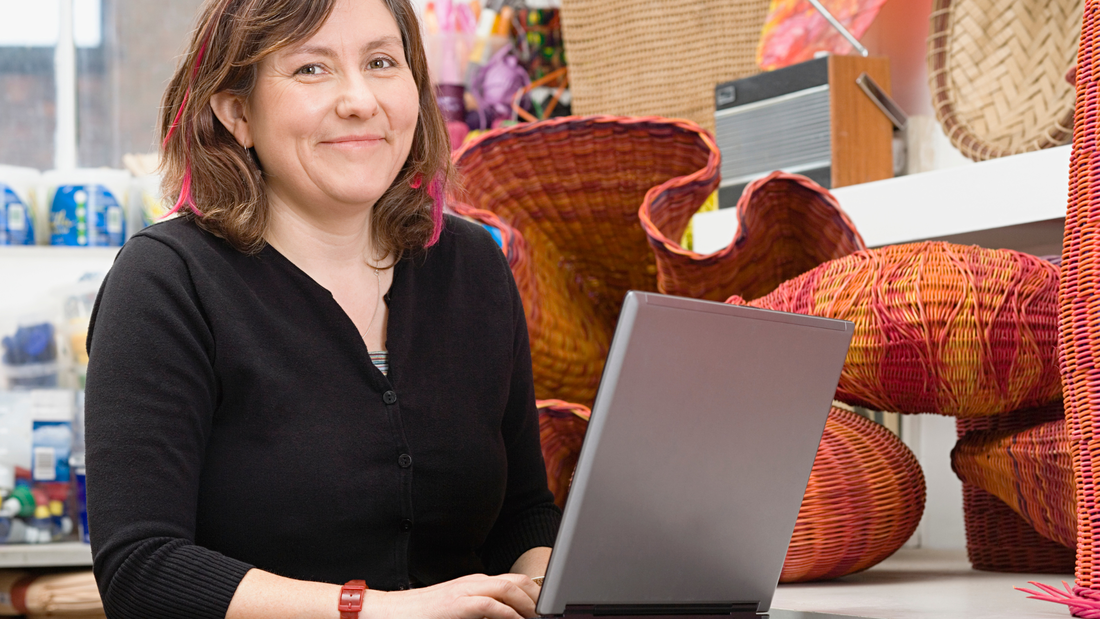
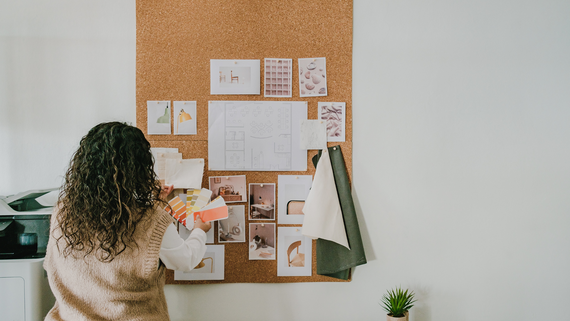
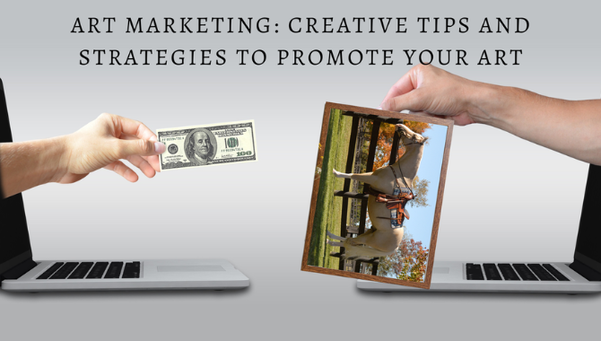
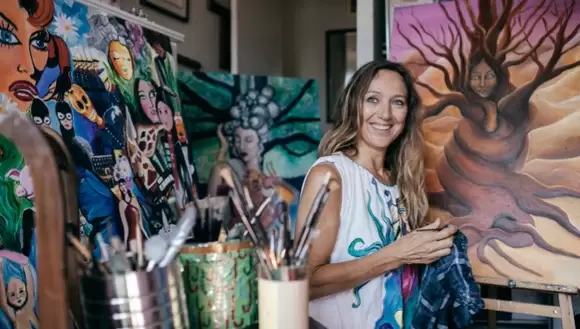
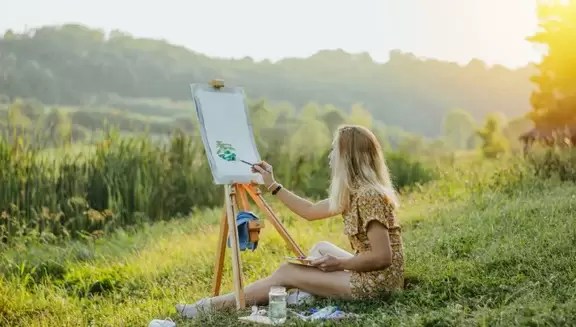

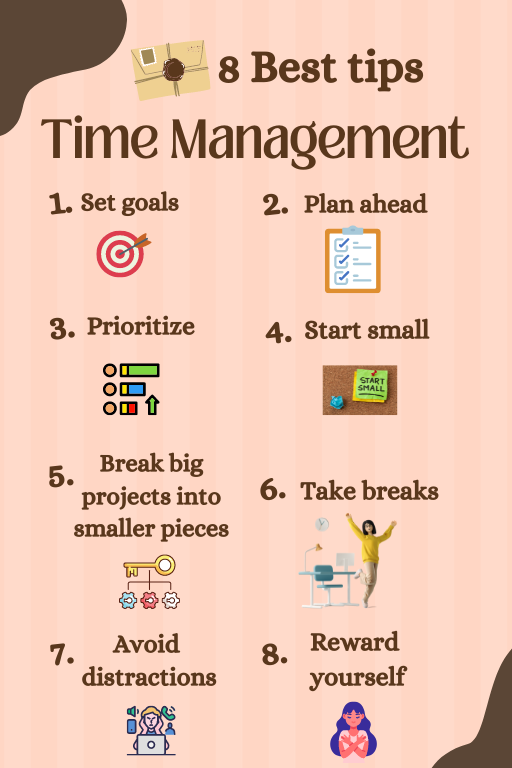

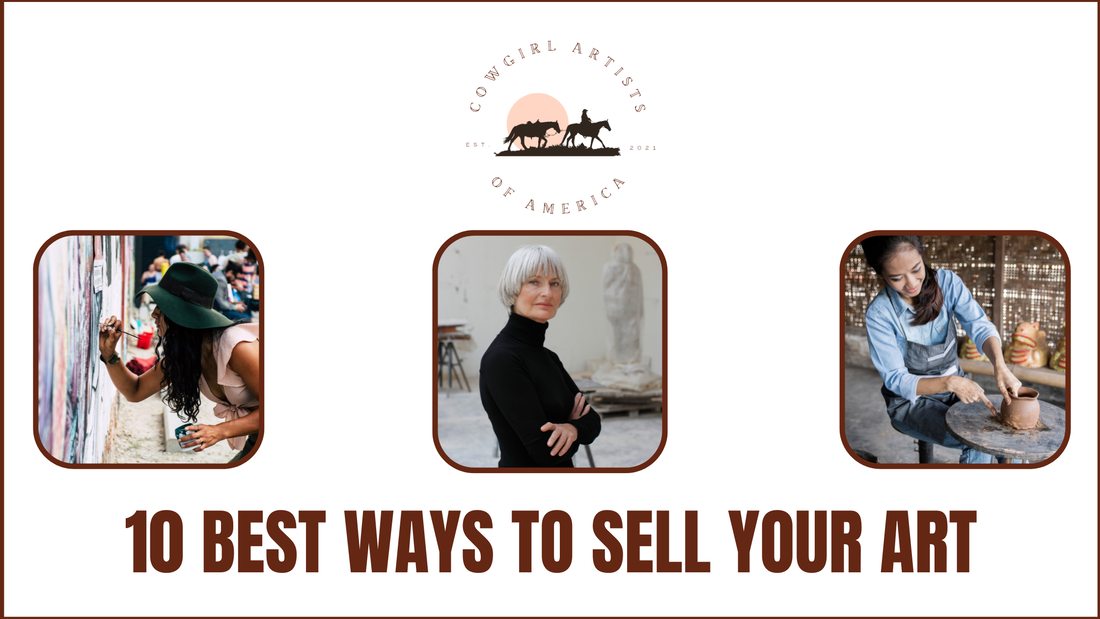
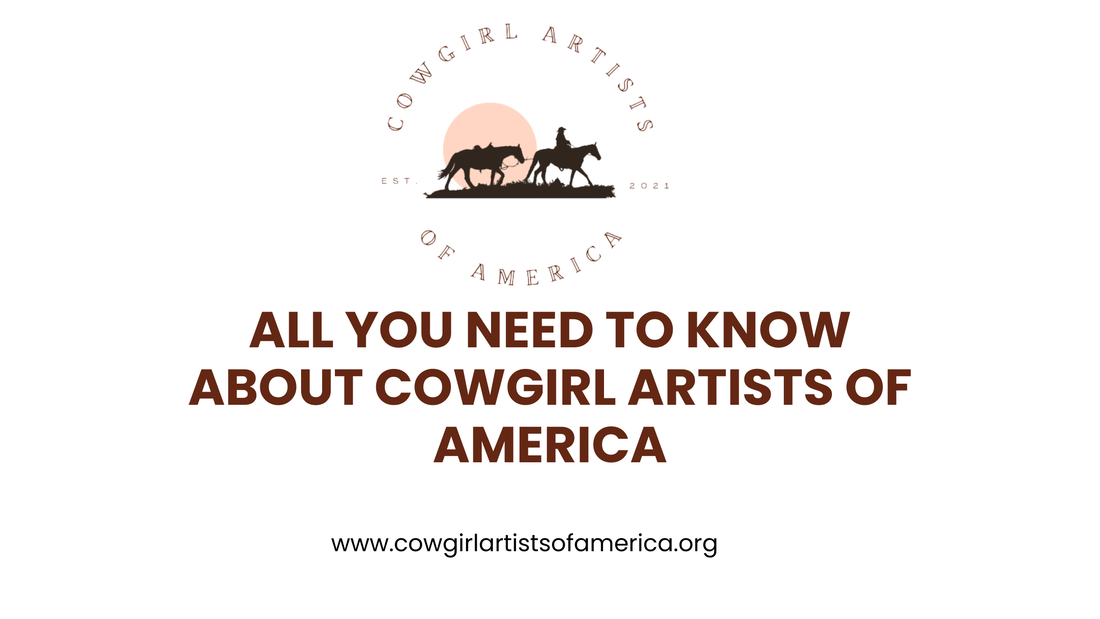
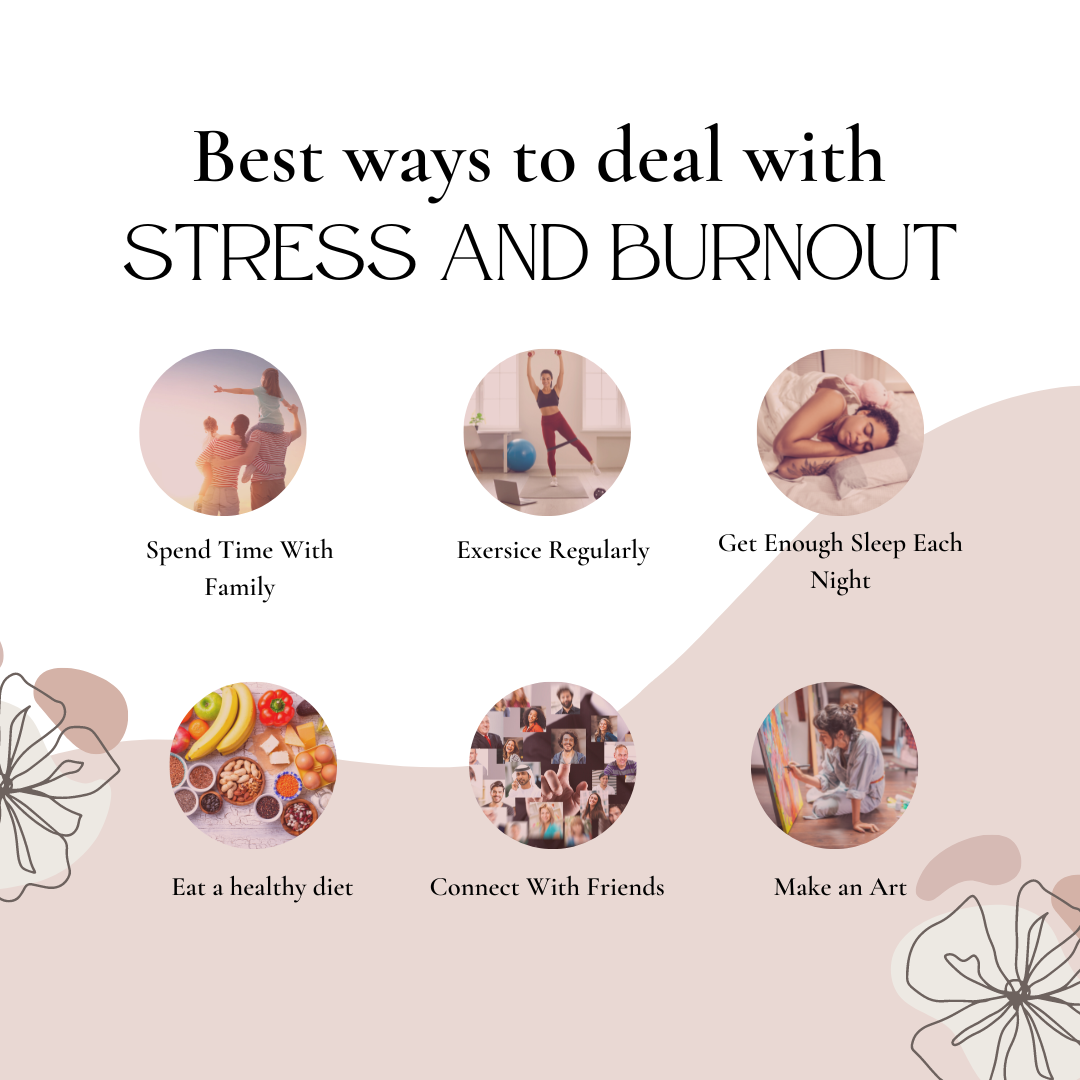
 RSS Feed
RSS Feed